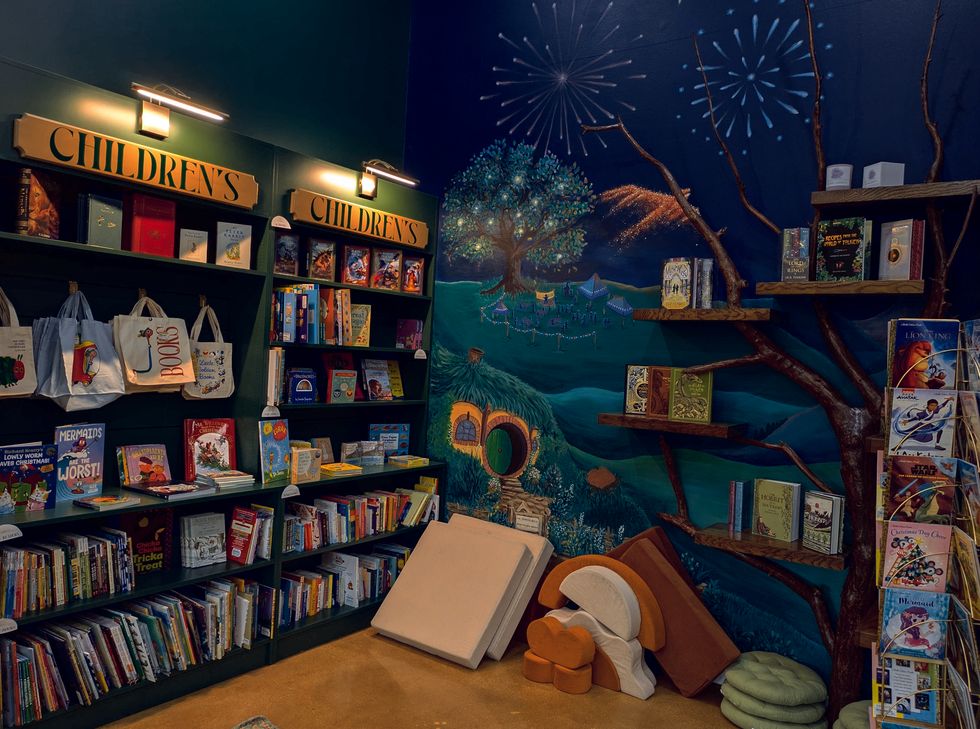Preserving history
San Antonio art exhibit honors recently uncovered history of 1875 church

Artist Gordon Huether's rendering shows part of a planned public art project, Presence of the Past and Culture Crossing Pavilion.
Come February 2025, visitors to San Pedro Creek will be able to check out a new public art installation that will pay tribute to part of San Antonio’s heritage.
California artist Gordon Huether is creating Presence of the Past and Culture Crossing Pavilion, a two-part, $2 million project that will represent the legacy of the St. James African Methodist Episcopal Church. Renderings of the art project were unveiled at a September 4 press conference.
Construction crews worked to restore and improve San Pedro Creek on the western edge of downtown in 2020, while archaeologists uncovered the cornerstone of the church, which was laid in 1875.
Over the past four years, church members worked with the San Antonio River Authority, which maintains the creekway, to come up with a permanent way to memorialize the congregation’s origins and the church’s impact on the community.
River foundation officials said St. James served a key role for local African Americans in the post-emancipation era. Formerly enslaved and free African Americans were able to gather and worship under the direction of the African Methodist Episcopal Church. The first congregation members initially met in each other’s homes between 1867 and 1871, until they secured a central place to worship — the former San Antonio Soap Works along San Pedro Creek.
St. James AME Church these days sits on North Richter Street on the city’s West Side; part of the original church site is now home to the Soap Factory Apartments.
According to a news release, Huether is putting together historic quilt patterns to lead visitors through the Presence of the Past, which is designed to resemble the church’s façade, and examine its emergence as the first AME church in San Antonio from 1867-1878.
The art installation will feature the AME shield, which will guide visitors to an altar bearing the names of the original church parishioners, and commemorate their contributions. The pavilion, the release says, will engage today’s church and community members, and encourage them to share their tales that will act as a larger story of San Antonio’s evolution.
The September 4 event, which happened at the future art installation site on West Houston Street, included San Antonio Poet Laureate Emeritus Andrea “Vocab” Sanderson reading a poem inspired by the site's story. Sanderson collaborated with several San Antonians to craft personal quilt patterns inspired by their individual histories, which will appear above the dais at the exhibit. These patterns are meant to bring to life a lively tapestry reflecting an important yet often-overlooked portion of San Antonio’s history.
"We are thrilled with the entire project, from the discovery of the St. James foundation and cornerstone to the unveiling of this innovative design that creatively and architecturally preserves the original structures,” Rev. Cynthia Ladson, St. James’ pastor, said in a statement.
Leaders from SARA and the river authority’s nonprofit arm, San Antonio River Foundation, said Huether’s previous large-scale public art installations around the nation will serve to inspire a unique exhibit commemorating St. James AME Church and early contributions of San Antonio’s African-American community. They also said the art installation will be a welcome addition to San Pedro Creek Culture Park.
“Thanks to careful assessment and input from the community, this site will be rehabilitated into a gathering place where people can connect with San Antonio’s dynamic and multi-layered history, honoring the contributions of the diverse ethnic groups that shaped the city’s unique culture,” Frates Seeligson, SARF’s executive director, said in a statement. “The site remains a tangible landmark of the thriving Reconstruction-era African American community.”
SARA Chair Jim Campbell said St. James AME Church was the first local Black house of worship where parishioners could gather autonomously, free from external restrictions.
“The church quickly became a beacon on the west side of San Antonio, championing political participation, education, civil rights, public service, and economic empowerment,” he said in a statement.
The river foundation is accepting donations toward the completion of the project.

 Book Nerd includes a whimsical children's area.Photo by Edmond Ortiz
Book Nerd includes a whimsical children's area.Photo by Edmond Ortiz Rhiannon Otero is one of four owners of Pages for Ages.Photo by Edmond Ortiz
Rhiannon Otero is one of four owners of Pages for Ages.Photo by Edmond Ortiz In addition to different kinds of books, Pages for Ages offers homemade pastries, handcrafted gifts, and stones and crystals.Photo by Edmond Ortiz
In addition to different kinds of books, Pages for Ages offers homemade pastries, handcrafted gifts, and stones and crystals.Photo by Edmond Ortiz